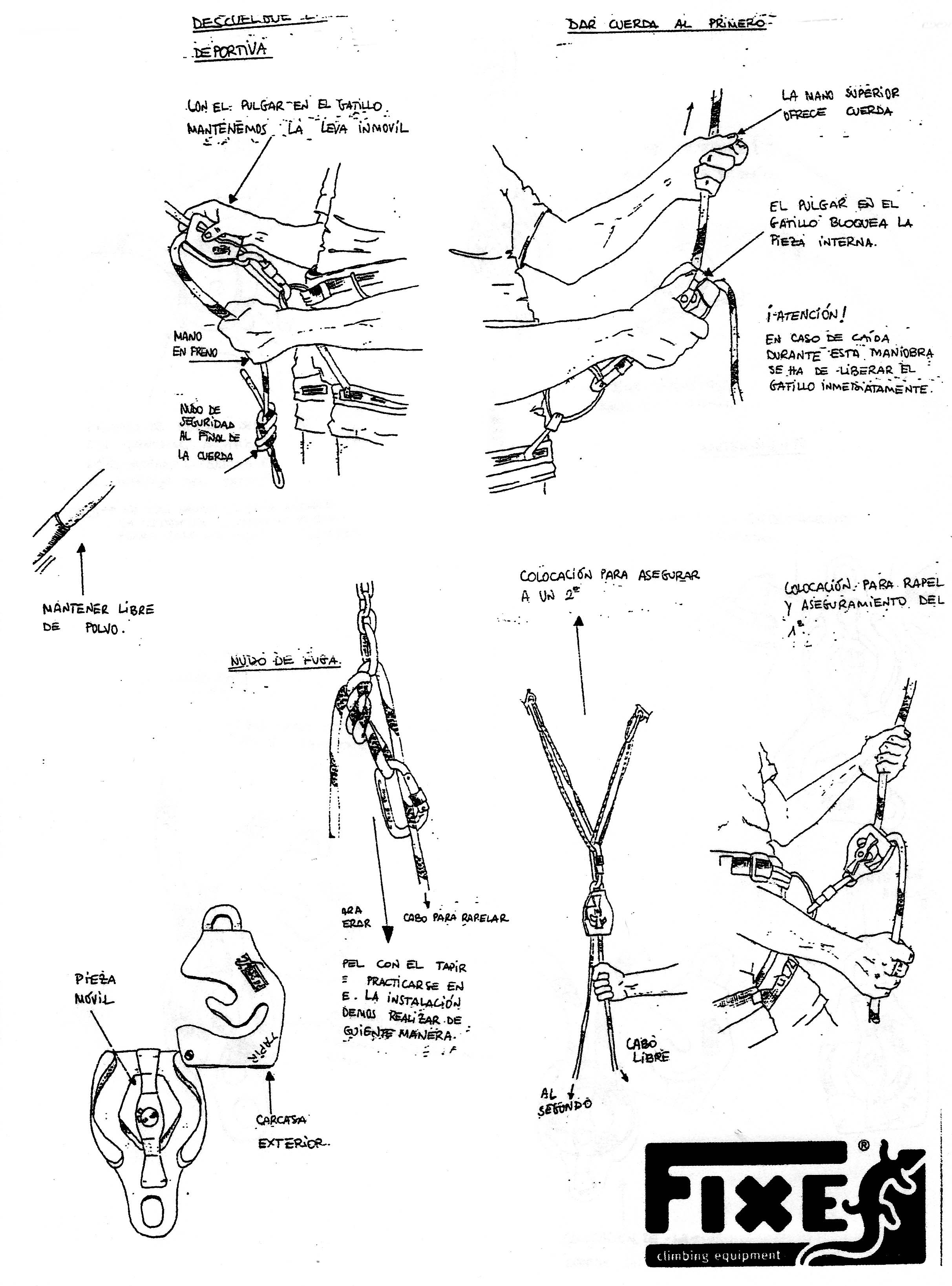Technical Details
I acquired my Fixe Tapir from Olivier Peron Caillet in 2008,
but it is older (ca. 1998), and no longer appears in the Fixe catalog.
The body of the Tapir is milled from 20 mm. aluminum and
then anodized. The body is open at the top and bottom, with milled
guides on the sides. The attachment eye is 18.8 mm. high
and 14.8 mm. wide. There are two 14.7 mm. lightening
holes drilled in the body.
A hole in the center of the body supports a cam axle that is
held in place by a 5.5 mm. round head hex socket cap screw
in the rear of the body. The cam axle 10 mm. in diameter
at its outer end, but has grooves and shoulders to support the
parts mounted on it. The first, closest to the body, is a subrounded
pentagonal cam. A spring-loaded plunger in the rear of the cam
engages three rounded detents in the body. There is a gap, and
then a control lever. An external retaining clip holds the lever
in place, and a stainless steel pin connects the lever to the
cam so that the two rotate together.
The cover is bent from 2.7 mm. aluminum sheet. It pivots
from a round head hex socket cap screw set in the top right corner
of the body. The lower portion of the cover is bent inward, and
ends at an oval hole that aligns with the eye in the body. There
are two slots in the cover. The upper slot clears the pin on the
cam, while the lower slot clears the cam/lever axle.
The Fixe Tapir is 120 mm. tall, 76 mm. wide, and
48 mm. thick. Mine weighs 273 g.
The front of the cover is marked with "TAPIR" and
the Fixe logo. The rear of the body is marked with a rigging diagram
and "MADE IN SPAIN PAT." One side of the body is marked
with "ONLY FOR ROPE OO UIAA" and "MINØ10 MAXØ11."
The other side is marked "WARNING PROPER USE REQUIRES EXPERT
INSTRUCTION." The "OP" stamped on the front of
the body are Olivier Peron’s initials.
The Tapir is well made, and seems to function reasonably well.
One nice feature is that the Tapir can be used equally well either left- or right-handed. In a fall (or when lowering loads),
friction rotates the cam in the needed direction to wedge the
rope between the cam and shell.
Unlike most lever box belay
devices, the lever on the Tapir is more of a knob than a lever.
When feeding rope, control the knob with the thumb of the braking
hand.
The Fixe Taper received Spanish Patent #1,039,374 in 1998.
|
 |
Warning:
Do not
use the Tapir on ropes smaller than 10 mm.,
since it will not lock reliably on thinner lines. |
 |
|

For far more content, use a larger monitor and a full-width window.
Hundreds of cell phone users complained and asked me to for a simpler, mobile friendly site. In particular, they wanted me to limit each page to a small number of pictures and minimize my use of text. This new site provides what they asked for.



